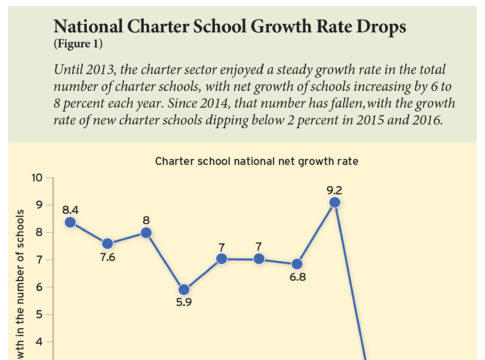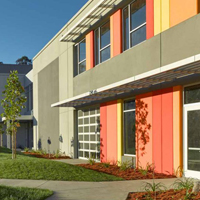Contact: Debra Britt, debbritt@u.washington.edu, Center on Reinventing Public Education
Researchers identify top three reasons for charter growth slowdown in Bay Area
Lessons from California can inform expansion efforts nationwide
January 25, 2018—In the last decade, the charter sector has nearly tripled its enrollment to serve more than three million students, with another half million on waiting lists. But despite such a large pool of hopefuls, the rate of charter school growth has fallen steadily since 2014, to less than 2 percent in 2016. In a new article for Education Next, Robin Lake, Trey Cobb, Roohi Sharma, and Alice Opalka of the Center on Reinventing Public Education (CRPE) study the factors holding back charter growth in the Bay Area of San Francisco, where the recent slowdown in charter expansion mirrors the national trend. The study reveals three primary barriers—scarce facilities, increased competition for resources, and heightened political opposition. These factors are tightly interrelated and exacerbate an already challenging reality of a maturing sector: after a period of rapid expansion, many charter networks are pausing growth in order to refine and improve their models.
The Bay Area is a five-county region surrounding San Francisco that includes 108 school districts serving 834,000 students, 9 percent of whom attend 178 charter schools. The enrollment growth rate of Bay Area charter schools peaked in 2012-2013, with more than 18 percent additional students enrolled than in the previous year. Since then, the sector has added fewer students every year, enrolling 6.6 percent additional students in 2016-17. To understand the decline in growth, Lake, et al., interviewed the operators of 74 different Bay Area charter schools; examined data on school openings, closings, authorizations, and enrollment; and reviewed media coverage, public polling data, demographic data, and facilities leasing and purchasing information.
Among their key findings:
• Too few school facilities. Buildings in the Bay Area that are suitable for school facilities are both limited and expensive. Though Proposition 39 compels districts to provide facilities for students within their boundaries who attend charter schools, districts can make the policy inconvenient for charter operators by offering short-term leases and multiple, separate spaces for a single school. Charter operators are also subject to rezoning expenses for which districts are exempt.
• Increased competition for resources. As well-established charter networks and schools attract staff, students, and funding, small and single-site operators struggle to get the start-up resources they need to get off the ground. Even successful networks struggle to acquire the support necessary for expansion into new areas deemed unattractive by funders.
• Political opposition. Both national politics and the perceived fiscal impact of charter schools on local districts have contributed to growing political backlash. Viewing charter growth as a threat, districts not only block access to facilities, but also bring lawsuits against growing schools and make charters’ compliance with state regulations more difficult.
The authors conclude that the easy days of Bay Area, and possibly national, charter growth may be over, and that reinvigorating the growth of quality charter schools will require new ideas and new strategic investments. Among the study’s recommendations for fueling growth: charter operators should consider formal arrangements with their district and state education agencies that pool their strengths and find new ways to work together. New models of cooperation are underway in cities such as Indianapolis, Tulsa, Atlanta, and Camden, New Jersey. Charter schools, and philanthropies that support them, should also consider targeting new, less politically fraught, areas for growth and cultivating a more diverse supply of charter school models.
This article coincides with the publication of a more detailed report by the Center on Reinventing Public Education entitled “The Slowdown in Bay Area Charter School Growth: Causes and Solutions,” which will be available Tuesday, January 30 on crpe.org.
To receive an embargoed copy of the Education Next article, entitled “Why is Charter Growth Slowing? Lessons from the Bay Area,” or the detailed CRPE report, please contact Debra Britt at debbritt@u.washington.edu. The article will be available Tuesday, January 30 on www.educationnext.org and will appear in the Spring 2018 issue of Education Next, available in print on February 28, 2018.
About the Authors: Robin Lake is director of the Center on Reinventing Public Education at the University of Washington Bothell, where Roohi Sharma is research coordinator and Alice Opalka is special assistant to the director. Trey Cobb is a middle school math teacher and current M.Ed candidate at University of Notre Dame.
About Education Next: Education Next is a scholarly journal committed to careful examination of evidence relating to school reform, published by the Education Next Institute and the Harvard Program on Education Policy and Governance at the Harvard Kennedy School. For more information, please visit www.educationnext.org.
About the CRPE: The Center on Reinventing Public Education (CRPE) is a nonpartisan research and policy analysis center at the University of Washington Bothell developing system wide solutions for K-12 public education. Visit crpe.org for more info.




